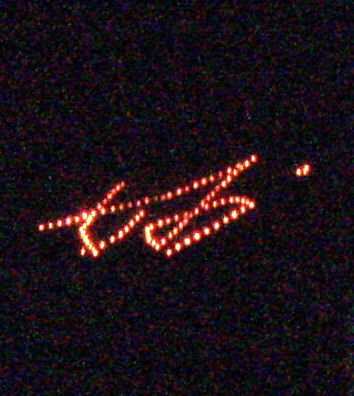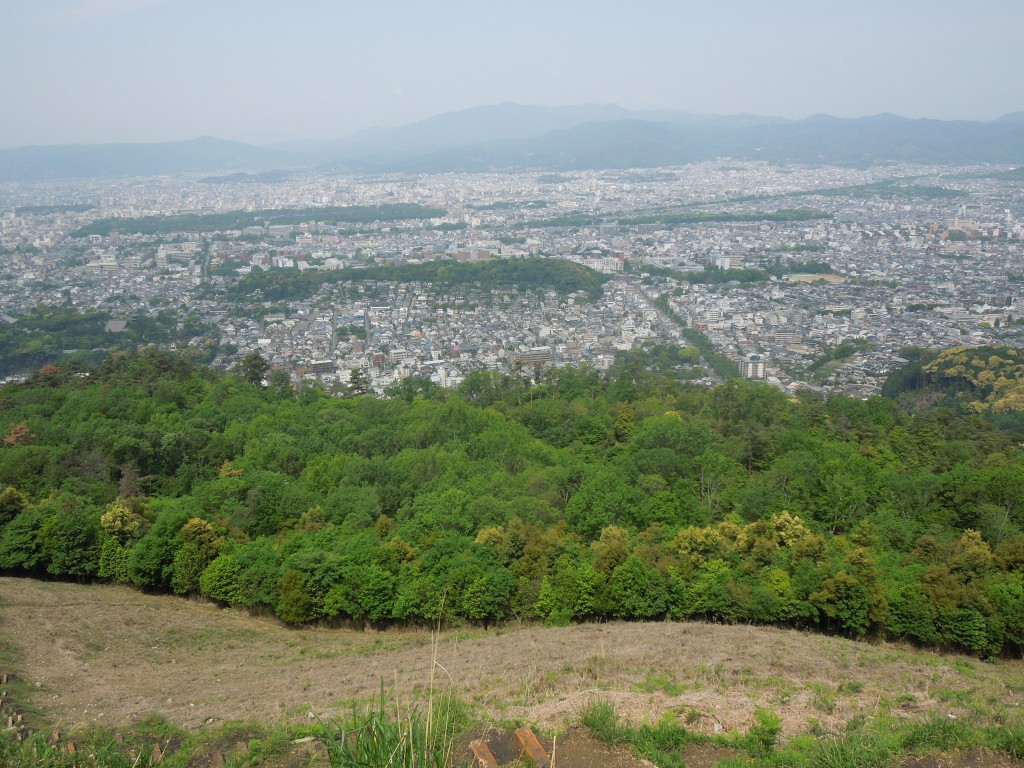Now that the Gion Festival has come to an end, Kyoto is looking forward to Obon and the days of the dead in mid-August. The highlight of the festival is the Sending Off (Okuribi) of the spirits of the dead on August 16, when bonfires are lit on the hills around the city.
The history of the event is obscure, and different versions exist, but the Japan News now has an authoritative account which contains some interesting expert opinion. (Though the festival is mainly Buddhist in orientation, it’s firmly syncretic in nature and one of the fires on the Kyoto hills shows a torii, as if marking a gateway to another world.)
*****************************************************************************
Bonfires for commoners: Origin of Kyoto’s popular Daimonji festival unknown
The Yomiuri Shimbun July 30, 2013 Yusuke Isoe / Yomiuri Shimbun Staff Writer
KYOTO–On the night of Aug. 16 each year, five giant bonfires are lit by local residents on mountains surrounding Kyoto, to send off the departed souls of their ancestors that have temporarily returned to this world. The grand Gozan no Okuribi (Bonfires on five mountains) is one of the most popular annual events in the ancient capital.

The Dai of Daimonji, most famous of the Okuribi fires, in the east of the city
The event is better known as Daimonji (The character “dai”), as two of the bonfires are clearly shaped like the kanji “dai,” which means large or great.
The traditional ritual has been preserved by five organizations, each earnestly maintaining one of the bonfires. Unlike the Aoi Matsuri festival in May and other major events in Kyoto, there are no documents that record or clarify the origin of the fire ritual.
Each of the five bonfires is in a distinctive shape. Three form kanji: Daimonji, which is lit on Mt. Daimonji; Myoho, which means wondrous dharma based on Buddhist teachings; and Hidari Daimonji (left Daimonji), which also forms the character “dai.”
The remaining two are called Funagata, which means the shape of a boat; and Toriigata, which means the shape of a torii shrine gate, according to their respective shapes.
The oldest description of the Okuribi event appears in the diary of court noble Funabashi Hidekata in 1603. It reads that he went to Kamogawa river to see the bonfires on the mountains. This is still a good location to view the Daimonji bonfire. Other good view spots include Mt. Funaoka and Shogunzuka.
Daimonji is said to have been started first among the five bonfires. As there are no reliable records on its origin, there are many theories about it.
There are three major theories as to when it started: during the Heian period (794-1192), the mid-Muromachi period (1336-1573) or the early Edo period (1603-1867). As I’ve examined various theories on its origin going back into history, I’ve become fairly certain it was started by ordinary people without particular status or fame.
One ancient tale says it dates back to the Heian period. According to the tale, Priest Kukai, the patriarch of the Shingon sect of esoteric Buddhism, saw a light emitted by the principal image of Jodoji temple at the foot of Mt. Daimonji. He gave a prayer to the character dai and had drawn that character on the side of the mountain in an area about 30 meters high by 30 meters wide.
At the foot of the mountain is Ginkakuji temple, built by Ashikaga Yoshimasa (1436-1490), the eighth shogun of the Muromachi government. Some believe he started the event around the end of the Onin war (1467-77), a civil war that almost destroyed the capital.

Part of the Myoho fires, on the Takaragaike hills in the north of the city
However, Prof. Toru Yagi at Bukkyo University, a folklore specialist, doubts the event is associated with Kukai or Ashikaga Yoshimasa.
Yagi said it is related to the manto-e event, a Buddhist ritual still held at temples by illuminating votive lights. Yagi said local townspeople who had offered these lights at temples moved the ritual to the mountainside and the event developed into a bonfire to send off the departed souls of their ancestors.
Yagi states that if Toyotomi Hideyoshi, a mighty warlord in the 16th century, had seen the event, it would have been recorded in documents. As there are no such records, Yagi believes that the event had yet to be started or was not an annual event around that time. “I assume that local people started the event later, when Kyoto was back at peace, to pray for the departed souls of those who died in war,” he said.
10 bonfires in the past
Before the Meiji era that started in 1868, five more bonfires were lit from the northern to western mountain areas of Kyoto. These bonfires were shaped like a snake, a long-handled sword, a bell attached to the tip of a bamboo pole, the hiragana character “i” and the kanji that means one. Ten bonfires were magnificently lit on the mountains at the time. However, half of them were eliminated and even their exact locations are unknown today.
Ryojun Kishino, the head priest of Ekoji temple in Sakyo Ward, said based on his interviews of longtime residents, the bonfire for the character “i” was lit on Mt. Mukaiyama in the ward until the mid-Meiji era (1868-1912).
According to Kishino, lighting the bonfire was undertaken by local households that had lost family members in the year. It was an extremely demanding task and the village was poor, so residents could not afford to maintain the ritual. “Once a tradition is discontinued, it can’t be resumed. It’s too bad,” Kishino said.
The location of the bonfire on the mountain mentioned by Kishino is a wooded area now. I saw no sign of the ritual there.
“The event was launched by people with no particular status or fame, so there’s no record of its origin,” said Hideaki Iwata, who wrote a book titled “Kyo no Daimonji Monogatari” (Stories on Daimonji in Kyoto).
The five bonefires have continued to this day solely due to the enthusiasm of local people.

View from the Daimonji hill over Kyoto: someone at some point decided it was a good place for the 'Dai' kanji

I’ve heard another theory regarding the origin of the fires at Daimonji. After a fire destroyed the Jodo-ji temple itself, a priest noticed a light up on the hillside, and a closer look revealed that the temple’s principle image was there intact. The fires were lit to honor this miracle.
By the way, on August 24, there is matsuage up in Kumogahata at Koun-ji Temple. They’ll burn a ‘kanji’ character on an adjacent hillside. The character isn’t announced beforehand. It is an intimate little affair, with only about 30 people or so.